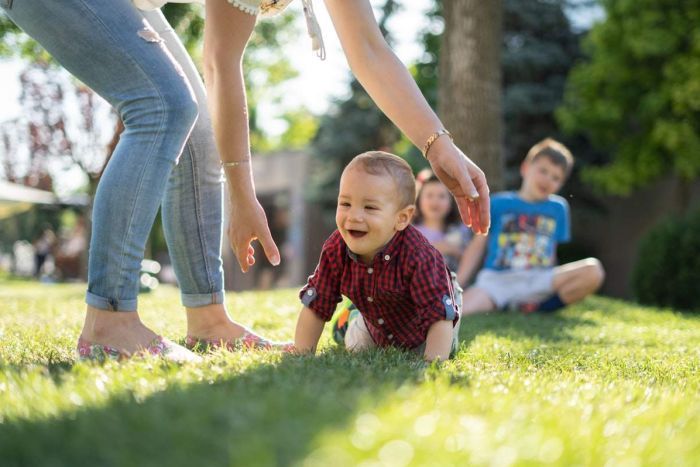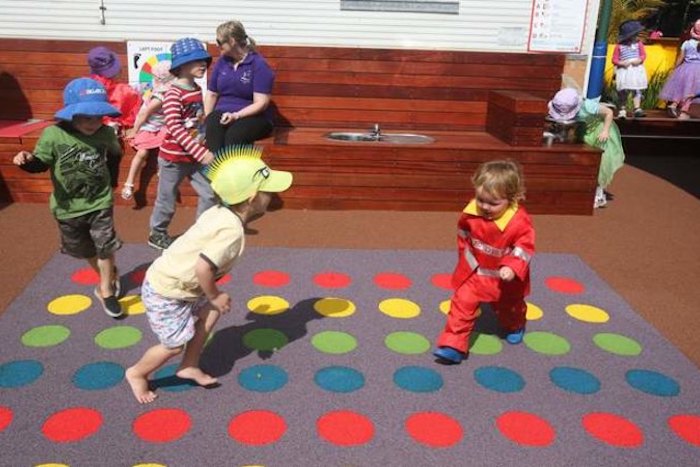Most of us know that the rich, the powerful and our politicians play in a different world than us.
A word in the ear of a mate here, a second cousin with a minister on speed dial there, and bingo — their children are sorted for jobs, university entry and for the perfect child minders (sorry, let’s call them by their French name — au pairs) from countries where the young women are white and speak desirable languages.
This is privilege on a stick. But don’t the rest of us also deserve a childcare system that promises us exactly what the rich get? One that’s flexible, affordable and as easily accessible as it appears au pairs are for the well-connected?
We don’t need an immigration solution for our childcare problem, we need something that works for all classes.
Au pairs and nannies have traditionally been used by families rich enough to have a spare room in their house, and it is easy to see their lure.

Most are paid around $18 an hour but have their board deducted from this and get the balance (around $200-$250 a week) in a payment known as “pocket money”.
It’s not hard to see why one of the au pairs Mr Dutton intervened for was confused as to whether she was working or volunteering.
Most of Australia’s au pairs come from Western Europe, the UK or the US. There are no accurate statistics on how many there are in Australia, but increasingly a range of families are using them.
Journalist Georgina Dent has three children aged eight, five and two and describes her family’s use of an au pair as “the glue that helps us manage work and family without falling apart”.
“It is more cost-effective to have an au pair to help across the week than hiring a nanny for a single day,” she says.
She says there is another responsible adult in the house as “a safety net for when kids are sick, work stuff pops up or life intervenes”.
Given her alternative is to rely only on a system with big shortfalls, one can see why she chose the au pair route to back up her childcare usage.
What shortfalls? Here’s a few:
It’s expensive
Despite the fact we have a new childcare subsidy that took most of the Abbott and Turnbull years to get through Parliament, and even though the system costs taxpayers $8 billion a year, families still have to shell out megabucks.
In half of all OECD countries, the government covers 90 per cent or more of the cost of childcare. The Australian government only covers 65 per cent.
OECD figures show the proportion of household expenditure spent on childcare in Australia is the highest in the world.
Under the new system, a family earning more than $67,000 a year gets a subsidy of $93 a day. One on $172,000 gets $58.
Some centres in Sydney and Melbourne now charge around $200 a day.
That’s still a huge gap between subsidies and fees.
To get their new childcare package through, the Coalition had to promise crossbenchers Derryn Hinch and David Leyonhjelm they would cut out subsidies for the 15,000 families using childcare who earn above $350,000. Au pair anyone?
There’s a scarcity problem
Yes, we have all heard the oversupply tales, but you try and get a childcare place for a child under two in many areas of our capital cities and you’ll see the problem.
The market-based supply and demand system Australia uses to meet our childcare needs has led to better supply in the more profitable end of the market — the over twos who require less staff.
Childcare access in rural and remote areas is patchy at best.
It’s even scarcer for children needing out-of-school-hours care. Only 70 per cent of out-of-school-hours care services have vacancies. And like childcare services, they mostly close at 6pm.
Families in shift work or who don’t have access to families and grandparents to pick up the slack find this hard deadline just doesn’t work.
It’s built on the backs of underpaid workers
Our educators earn as little as $21 an hour.
Earning low wages to mind children might be OK for a year as an au pair, but try supporting your own family on childcare educator wages.
Low wages mean high educator turnover (65 per cent of the workforce have been in it for less than six years).
Increasingly, the sector is attracting those with few other options, often young women who have English as a second language.
But there’s good news
What our childcare system does have though is quality.
Most agencies demand only that their au pairs have 200 hours of childcare experience.
To work in a childcare centre, you need a Certificate III, and 50 per cent of staff at every centre need a diploma. And most services need at least one early childhood teacher.
We also have mandated ratios and a National Quality Standard.
A 19-year-old backpacker or a qualified early childhood educator in a quality system? I know what I’d prefer.
In Malcolm Turnbull’s outgoing speech he put childcare reforms as one of his government’s “very, very, substantial achievements”, calling them “once-in-a-generation reforms”.
But parents across Australia struggling to make sense of a childcare subsidy system even more complicated than the old one must have been laughing at this point.
But it isn’t laughter that will get us the childcare, the early education and care system that we need and our children deserve.
It will only happen when we vote for a government with leaders that actually really reform our childcare system instead of helping their best buddies overcome its systemic failures.
First published on ABC News, August 31st 2018.
Lisa Bryant is a childcare consultant.



